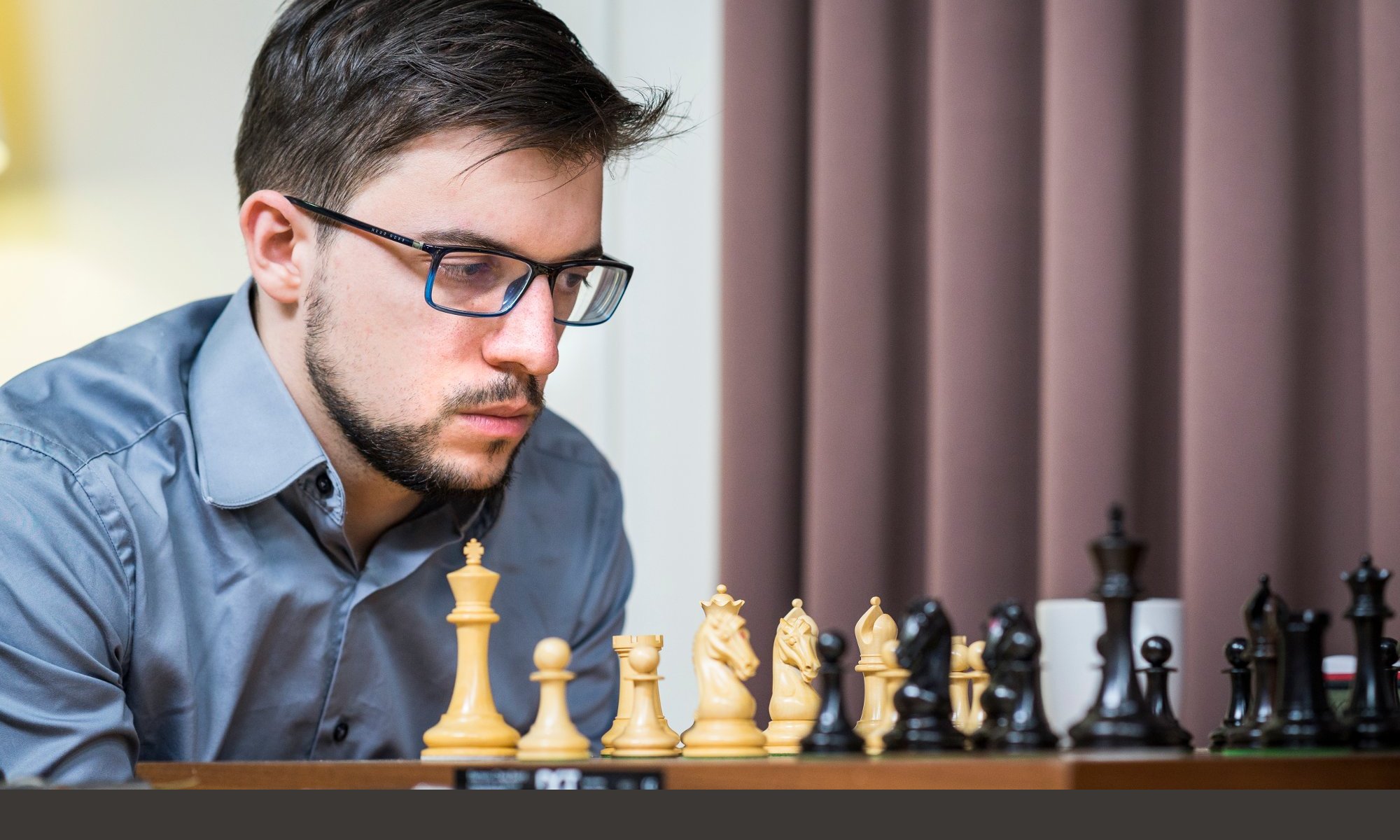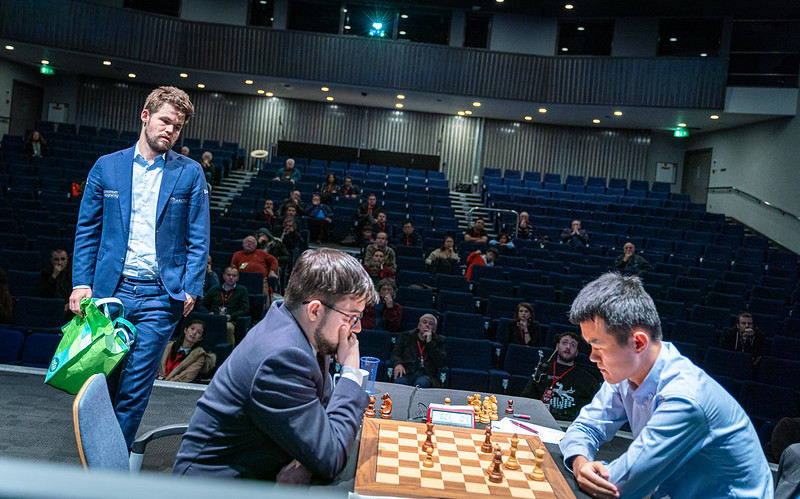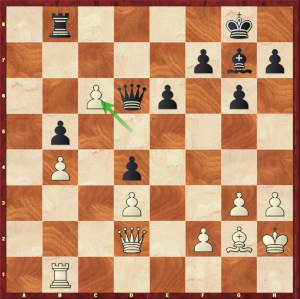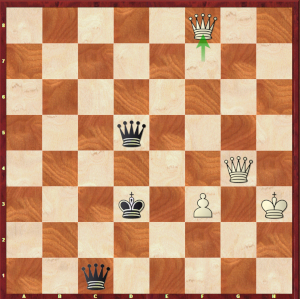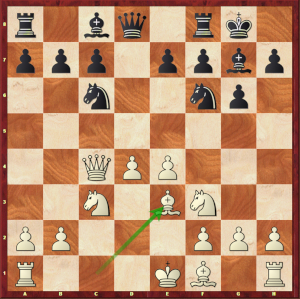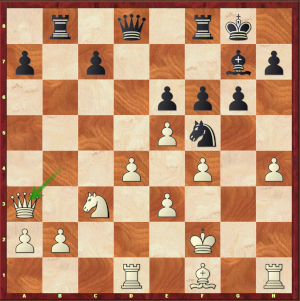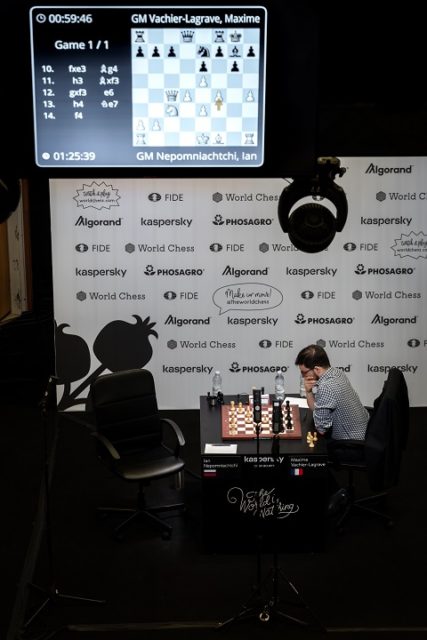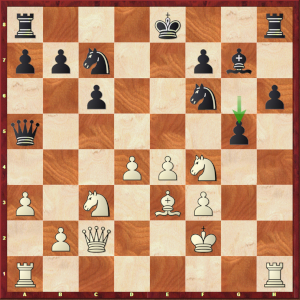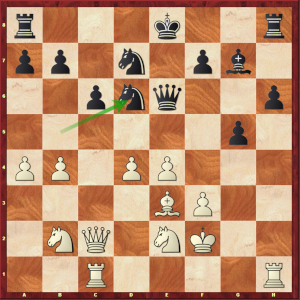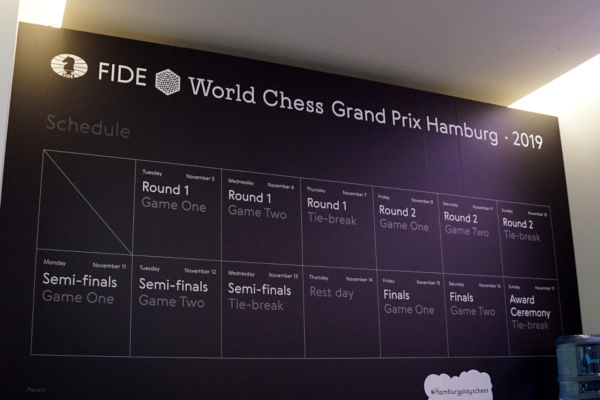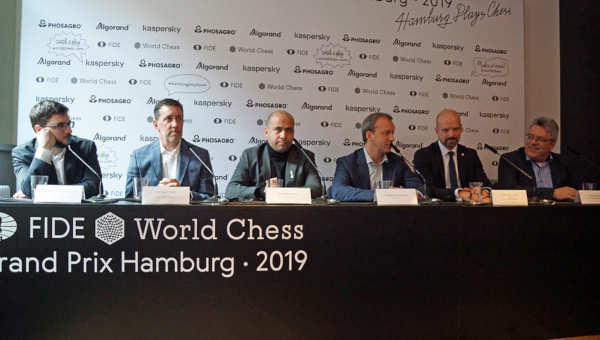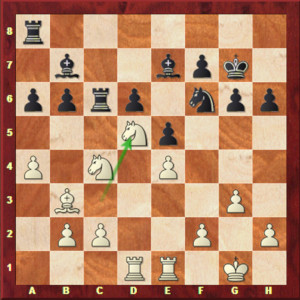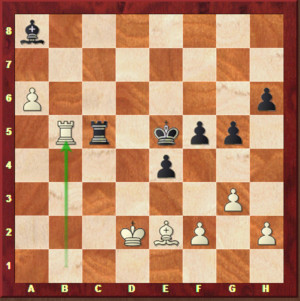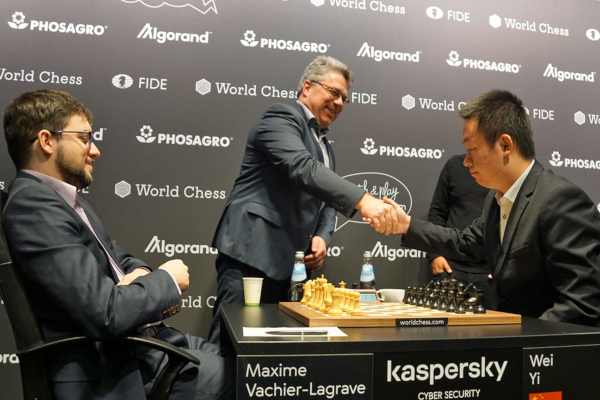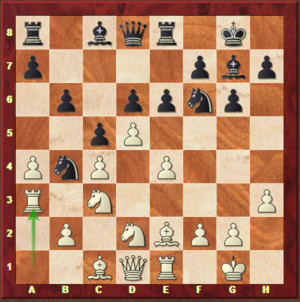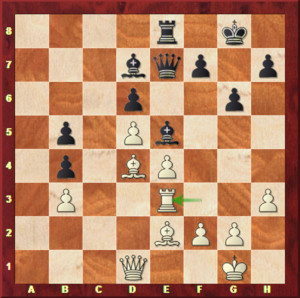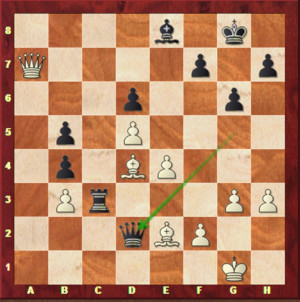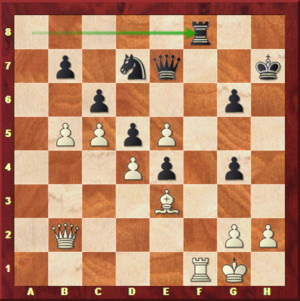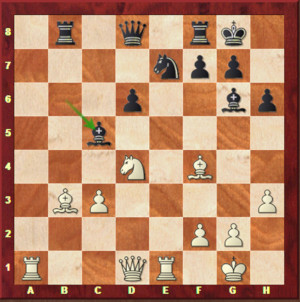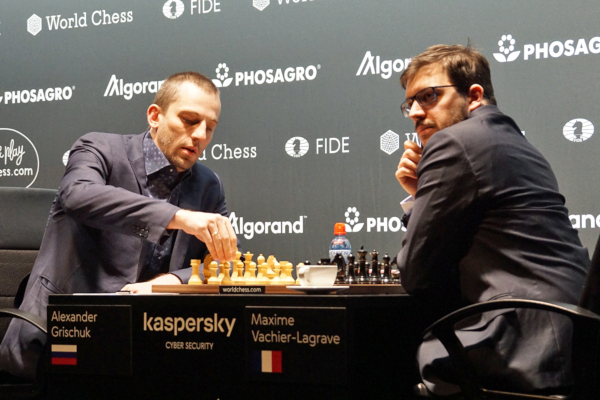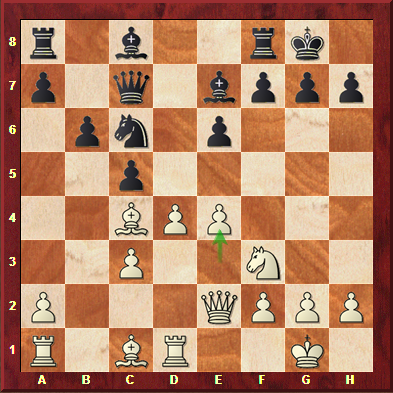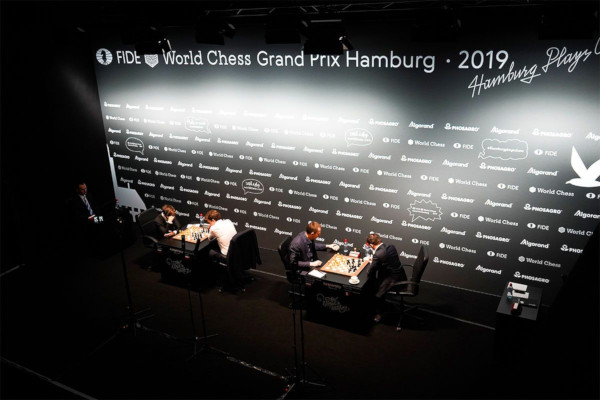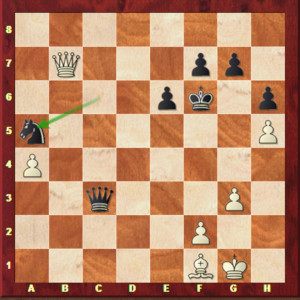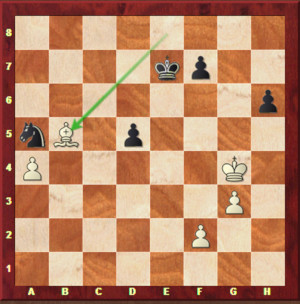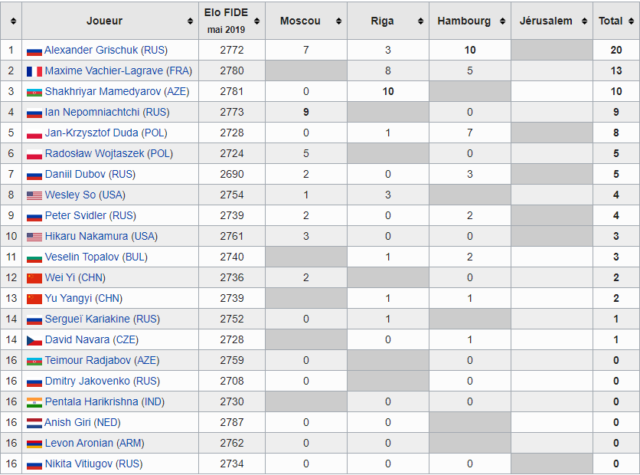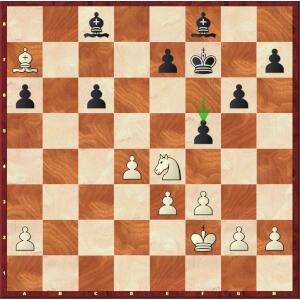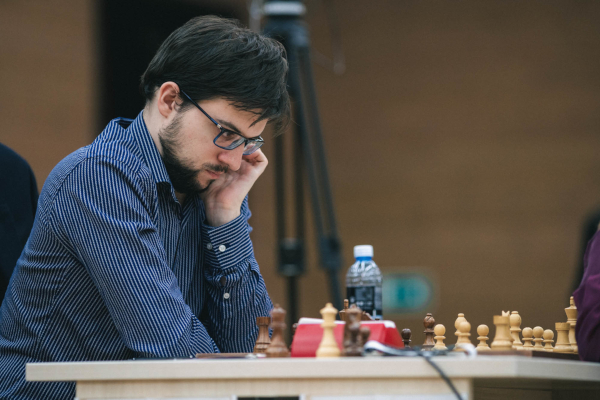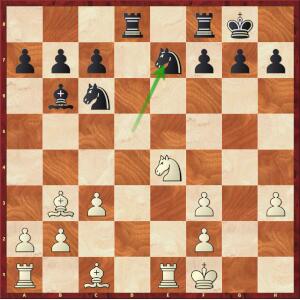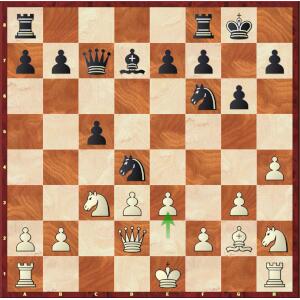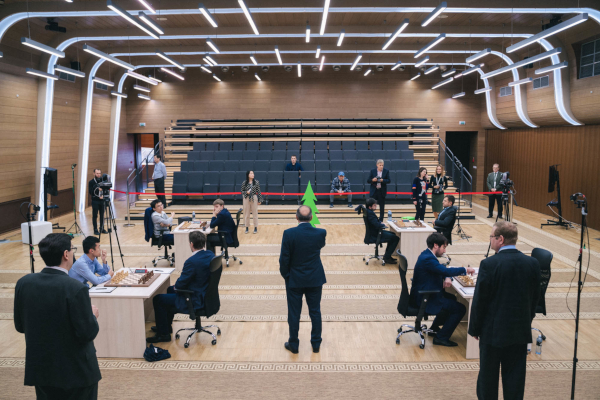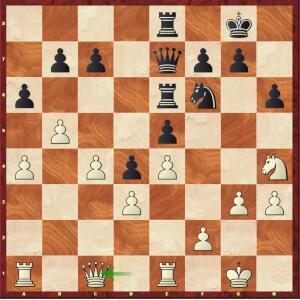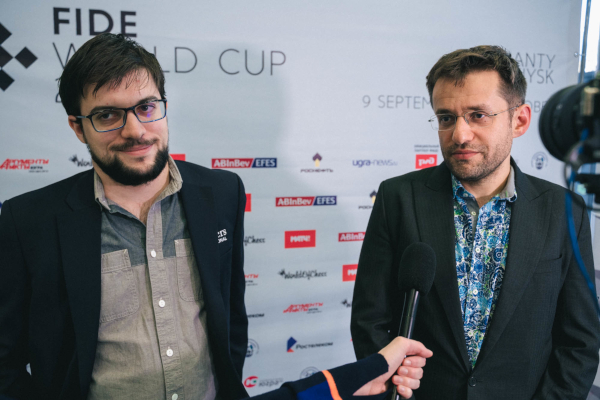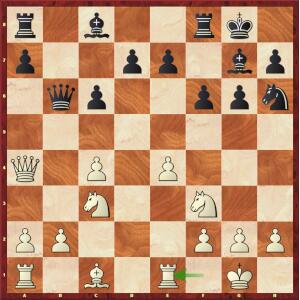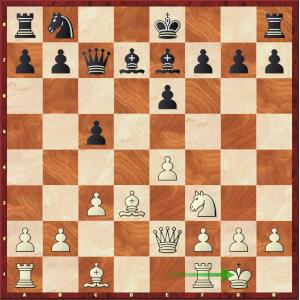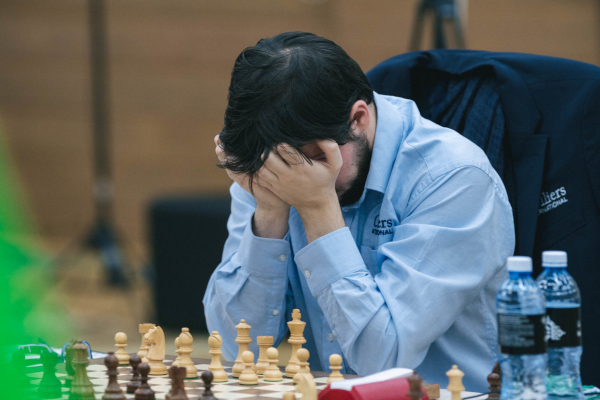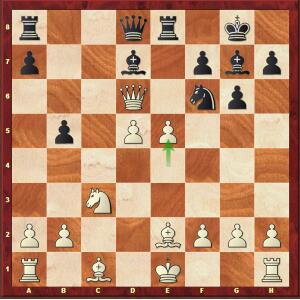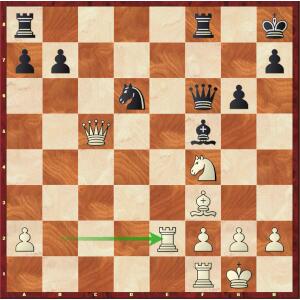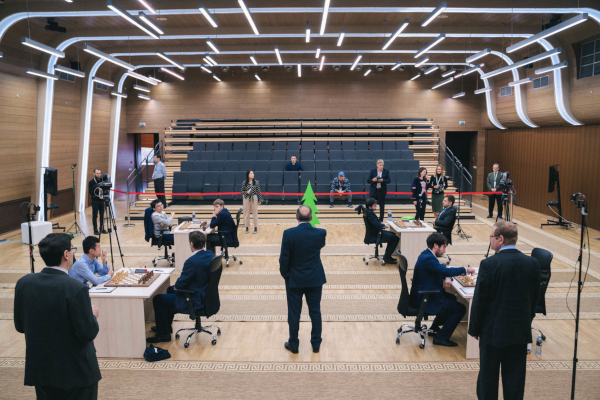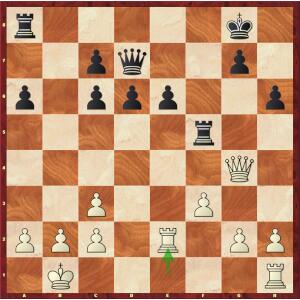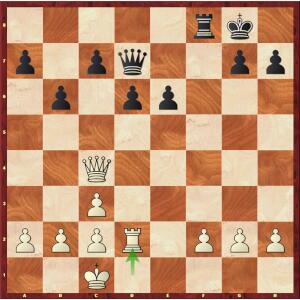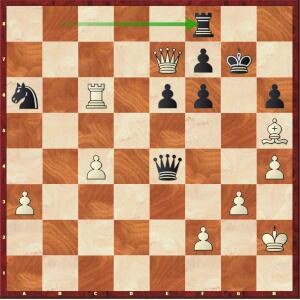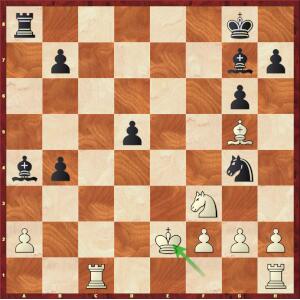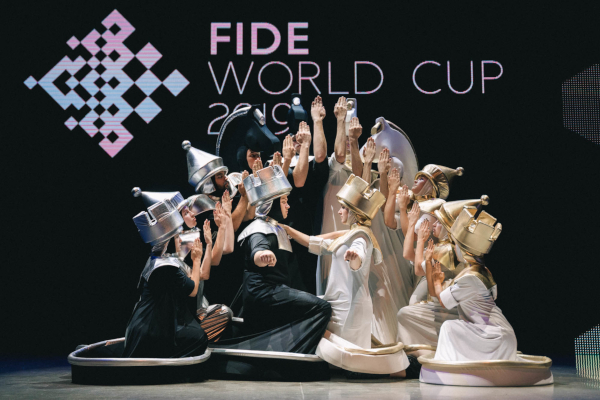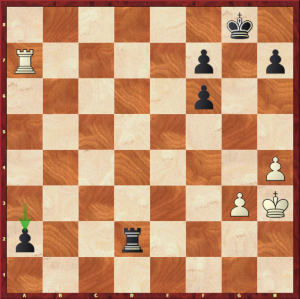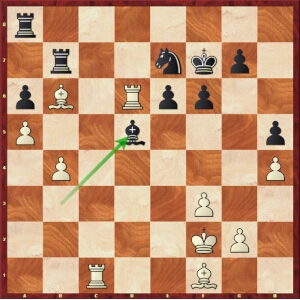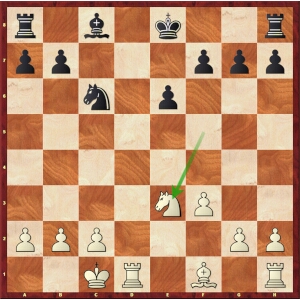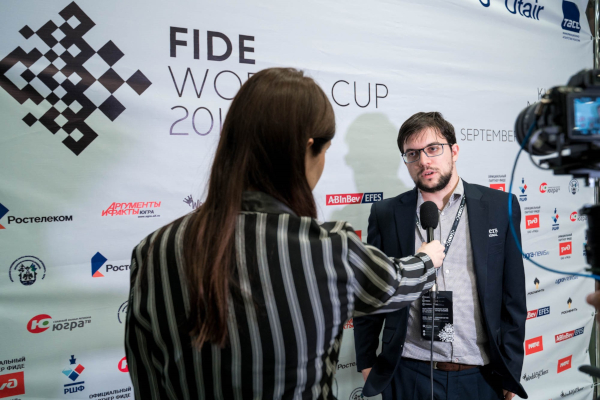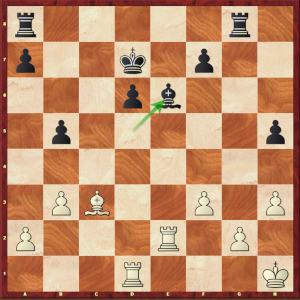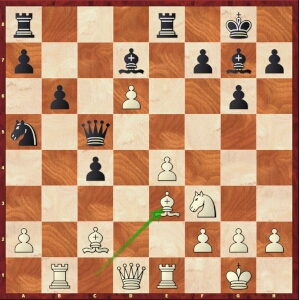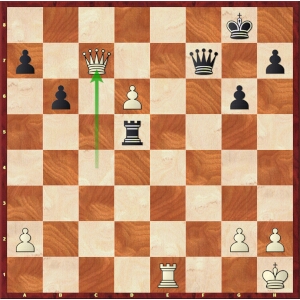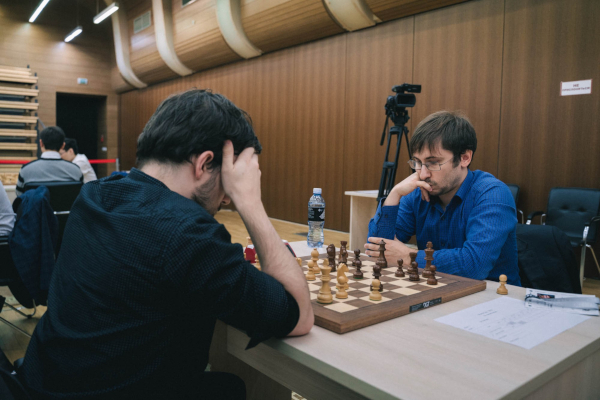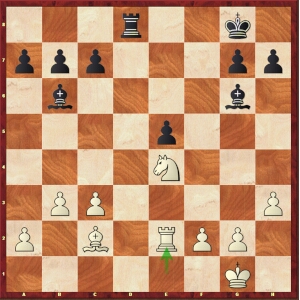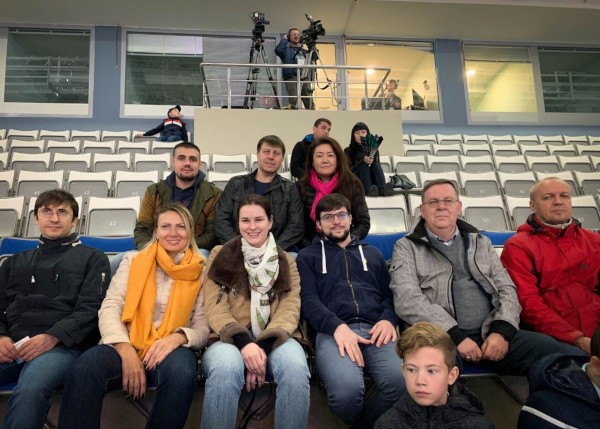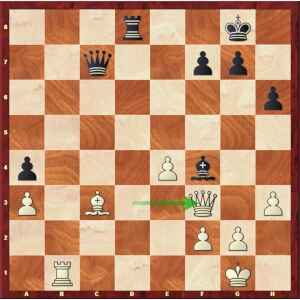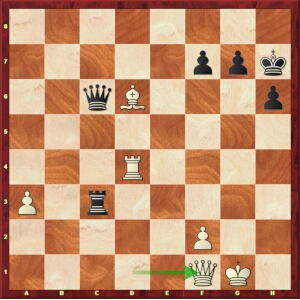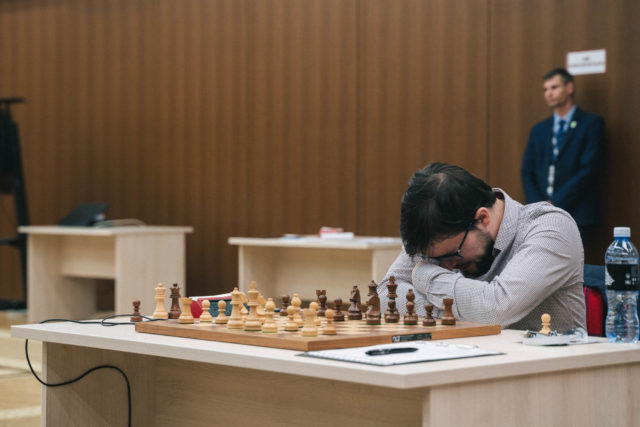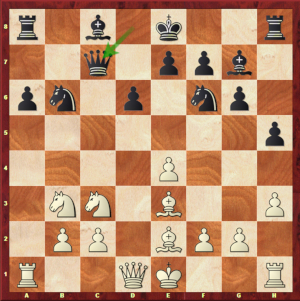This is indeed the 9th time I’ve been here for the Grand Open at the beginning of the year in Gibraltar’s Caleta Hotel, a tournament that I particularly enjoy. After the tension of the last months of 2019 with the Grand Chess Tour and the qualifying tournaments for the Candidates, it was nice for me to play an Open, most of the time with opponents I had never played against before.
Round 1: MVL – SUKANDAR (2402) 1-0
This game against an Indonesian IM was a good warm-up to get into the tournament. There were many lines to calculate, after 14…Qb6 already, a move that forced me to sacrifice a pawn. Generally speaking, there were quite concrete things to evaluate, including a few nice lines 🙂 . For example, after 22.b4 :
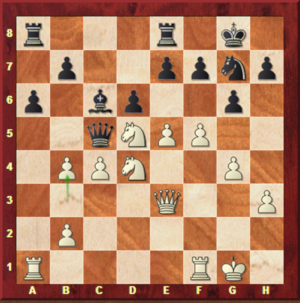
My opponent played 22…Qa7, but in case of 22…Qxc4, I had planned 23.Nb6 Qxb4 24.Nxa8 Rxa8 25.f6! exf6 26.exf6 Ne8 (26…Re8 27.Qc3) 27.Nxc6 bxc6 28.Rxa6!.
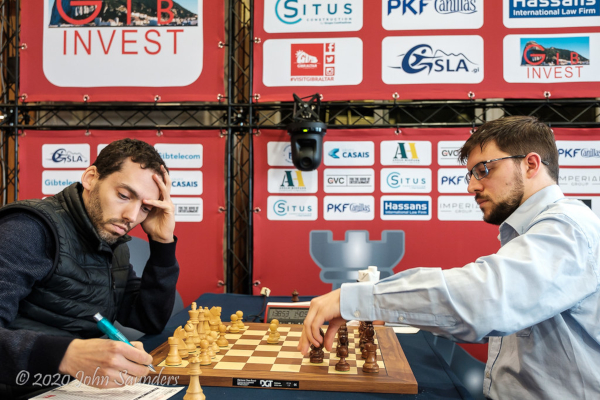
Round 2: FLOM (2510) – MVL 1/2
The French IM played a line from the Grunfeld Exchange that I knew, of course.
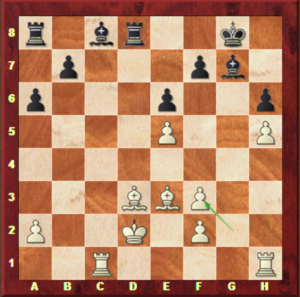
In this position, I was well aware that 20…Bxe5 was leading to a draw. So I decided to play something else, but well, that didn’t bring much; I remembered that 20…Bd7 was probably not so good, but playable to avoid an immediate draw. But then I felt wings sprouting; indeed, after 21.Rhg1 Bb5 22.Rc3 Kh8 23.f4 Rd5 24.Kc2 Bxd3+ 25.Rxd3 Rc8+ 26.Kd2 Rcd8 27.Rxd5 Rxd5+, I didn’t expect 28.Kc2, but 28.Ke2. Then I realized that if I allowed him to play 29.Rd1, it would be a draw right away. So I calculated 28…f6? to continue the game, for example after 29.exf6 Bxf6 30.Rg6 Rf5. But he played 29.Rg6! and I then realized that there is no 29…fxe5 30.fxe5 Rxe5? because of 31.Bd4, white’s King being on c2, and not on e2! So I had to give two pawns away and pray that it would work… Well, it seemed like it should draw anyway after 30…Bxe5 31.Rxh6+ Kg8 32.Rxe6 Fd4, but it was a bit of a sport, let’s not kid ourselves.
Indeed, the final position is the famous Vancura draw in the Rook endgame, known for a century. So if there is any refutation, it would already have been found 🙂 .
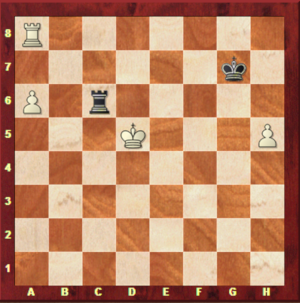
In fact, I got Vancura’s position, but with a pawn on h5 in addition, which however plays no role. I had a little scare because it took me a little while to find the exact path to the draw, but I finally managed it before my opponent tested my knowledge! After 51…Rf6 52.Kc5 Rf5+! (but not 52…Rh6? 53.Kb5 Rxh5+ 54.Kb6 Rh6+ 55.Kb7 and the fact that there is no check on the 7th costs the game) 53.Kc6 Rf6+ 54.Kd7, I saw the drawing pattern with 54…Rb6 (in this exact position, 54…Rf7+ is even simpler). 55.Kc7 Rf6 (only move) 56.h6+ Kh7 (only move) 57.a7 Rf7+ (only move!) and as soon as the White King wants to get out of lateral checks, he must let the Black Rook pass on the a-file, with a trivial draw.
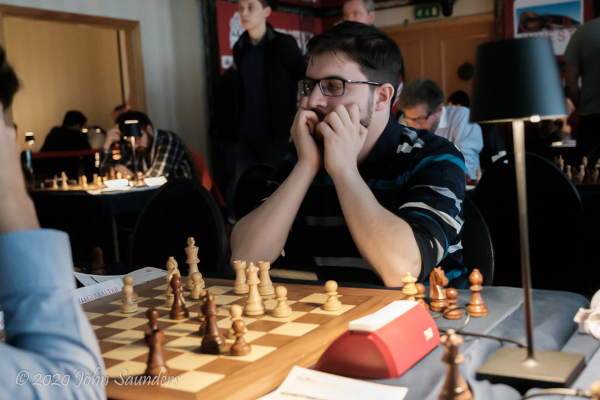
Round 3: MVL – BARON (2529) 1-0
A power outage was the highlight of the round 🙂 . It affected the whole neighbourhood! Luckily, the Caleta Hotel had quite a few small desk lamps that worked without electricity, which were to be used for the closing ceremony. Some brave players had chosen to continue the game in this kind of subdued atmosphere… Others, including my opponent Tal Baron, kept thinking in half-light, clock stopped; which turned out to be counterproductive in his case, since he made a fatal miscalculation as soon as play resumed!
Round 4: VAIBHAV (2593) – MVL 1/2
Round 5: MVL – SANAL (2569) 1/2
After a near-theoretical draw against Vaibhav, I had white against the Turkish GM Sanal; the only one of my 6 white games that I didn’t win 🙂 .
That game had gotten off to a bad start due to a miscalculation…
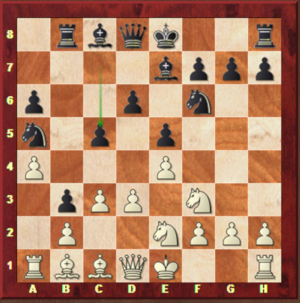
Here, I had anticipated 13.d4, but finally, the position after 13…Qc7! 14.dxe5 dxe5 15.Nxe5 0-0! 16.0-0 (16.Bf4 Rd8) 16…Qxe5 (16…Rd8 17.Qe1) 17.Bf4 Qh5 18.Bxb8 Bg4, I didn’t like it.
So I played 13.h3 0-0 14.c4, with the idea of surrounding the b3 pawn. But it’s a slow plan and I think he didn’t react very well because he let me regain the advantage. Except that I myself mishandled the position back, and I even had to be careful in the endgame in order to draw.
All in all, the first half of the tournament was quite uneven, with a few games where I calculated rather well, and some quite ugly games, I’m thinking in particular of those against Flom and Sanal.
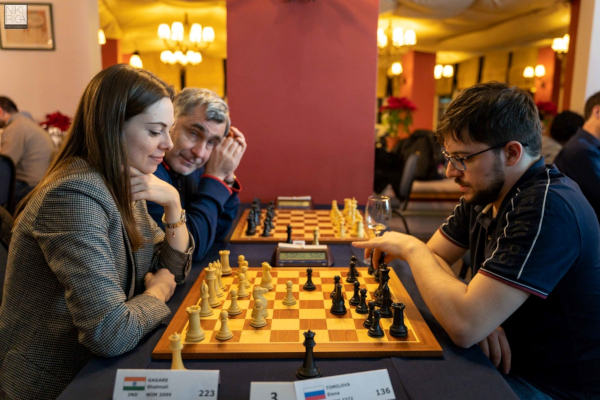
Round 6: MVL – PERALTA (2574) 1-0
A rather well-controlled game on the whole, notably because I refuted his conception in the opening :
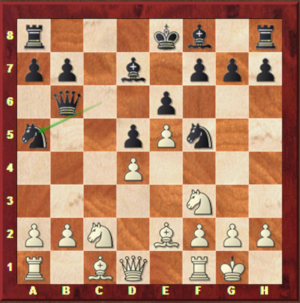
I didn’t know 10…Na5 immediately, and I found on the board the very interesting move 11.h4!?, while 12 other moves had already been tried in this position!
I don’t know if it’s that strong, but in any case, he fell directly into my trap, because after 11…h5?! 12.Ne3 Nxe3 13.fxe3, I already have a clear advantage. We’ll move on to the final episode of this game, already well documented on specialized websites 🙂 . In a completely winning position, I played a move that let him back in the game, but he had the same hallucination as me, thinking he was being mated, and he resigned!
Round 7: KARTHIKEYAN (2606) – MVL 1/2
Karthikeyan is a young Indian who beat me in the last round last year, despite my Najdorf turning out pretty well for me. This time, he played the opening well and managed to get the advantage, but luckily he underestimated his position twice, and allowed me to stabilize the game.
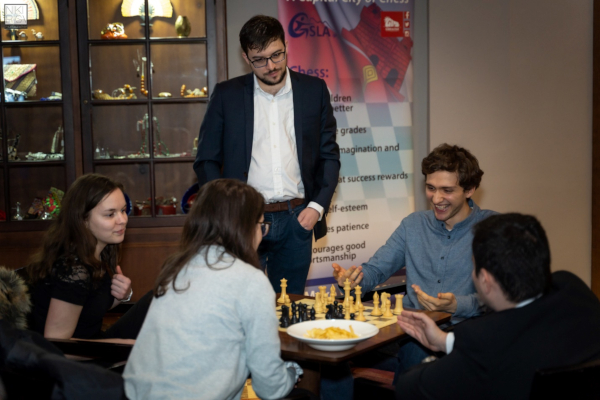
Round 8: BASSO (2600) – MVL 1/2
Round 9: MVL – CAN (2600) 1-0
After another draw with Black in a very theoretical Grunfeld against Italian GM Basso – without ever being able to play for the win – I faced the Turkish Can in the penultimate round :
I think he made it easier for me by quickly entering a Queenless middlegame:
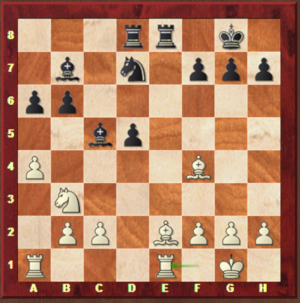
Can certainly thought that the position was not so dangerous, but in fact it seems to me really inferior because in addition to the isolated pawn, the Bb7 is badly placed and the a6-pawn is weak too. Here, he should still have tried to be active by 17…Re4 18.Bg3 Rde8 19.Kf1 Bc6, rather than allowing 17…Nf8?! 18.a5!, and the position becomes a long torture for Black after 18…Ne6 19.axb6 Bxb6 20.Bd2 Nd4 21.Nxd4 Bxd4 22.Bd3!. Maybe I had a more concrete solution after 22…Re6 23.Ra4 Ff6 24.Rb4 Bc8. Instead of 25.Ra1, 25.Rxe6 fxe6 26.Rb8 (idea 27.Ra8) probably would have won the a6-pawn. But then, do you want to make concrete decisions in this position? Not at all, actually! Because even if I take a6, Black may have counter-play with …Rc8 and …e5. There are a lot of details to check, and the position does not require such an approach from a practical point of view, in my opinion.
Round 10: MVL – MAGHSOODLOO (2674) 1-0
A win in this last round game wold give me a small chance to finish in the leading pack, and I had the pleasant surprise of doubling white against the former world junior champion. I played 1.d4, which seemed to me a relevant choice against this specific opponent.
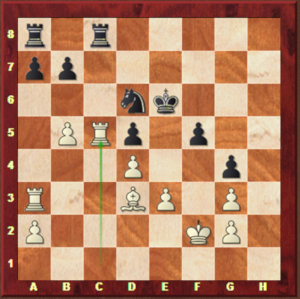
J I got an ending a pawn up, but it was definitely a draw. Here, the easiest for him was 30…Rxc5! (instead of 30…Rd8) 31.dxc5 Ne4+ (31…Nc4 should also be a draw, but the possible pawn ending to be foreseen from afar after 32.Rc3 Rc8 33.c6 bxc6 34.Bxc4 dxc4 35.Rxc4 Kd5 may be frightening) 32.Bxe4 dxe4 and Black will end up ok without difficulty. In the game, after 30…Rd8 31.Rac3 Rd7 32.a4, he certainly didn’t need to give me the c6-square with 32…b6? 33.Rc6 Rdd8 34.Ke2 Rd7 35.Rc1 Rh8 36.a5! and black’s position only holds by a thread. I may not have played optimally afterwards, but it’s always difficult not to allow any counter-play at all.

The balance of this tournament is contrasted; 5.5/6 with white is very correct, but drawing all my black games against weaker players on paper cannot satisfy me. Of course, I finish in the leading group at 7.5/10 (with 6 other players). But as a symbol of the year, I ended up 5th in the tie-break (Elo performance), a very small point behind the fourth and last player qualified for the tie-breaks awarding the £ 30.000 first prize 🙂 .
I don’t have any tournaments scheduled before April or May, so it’s a good time to take stock and find ways to improve!
No need for the federation to bring together one of the strongest french teams ever. Maxime, with Etienne Bacrot (2669 Elo), Maxime Lagarde (2655), Romain Edouard (2653), Christian Bauer (2625), Yannick Gozzoli (2599), Matthieu Cornette (2556), Fabien Libiszewski (2526) and Kévin Bordi (2288), is playing the prochessleague 2020. After 6 rounds, the French are 2nd in the Central Division.
Les parties de Maxime à Gibraltar :
Les parties de Maxime en ProChessLeague
